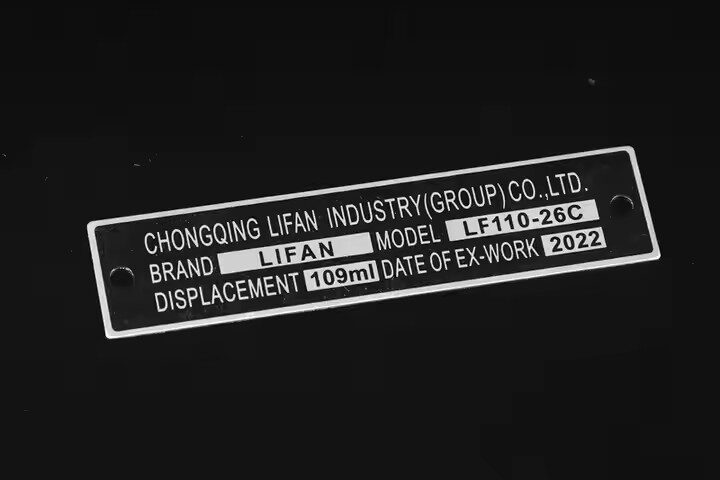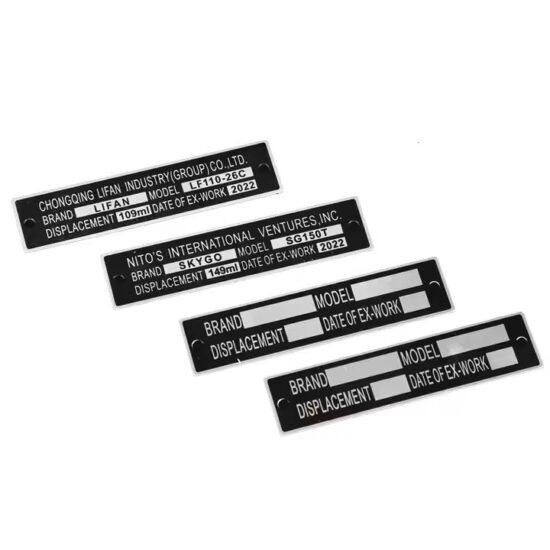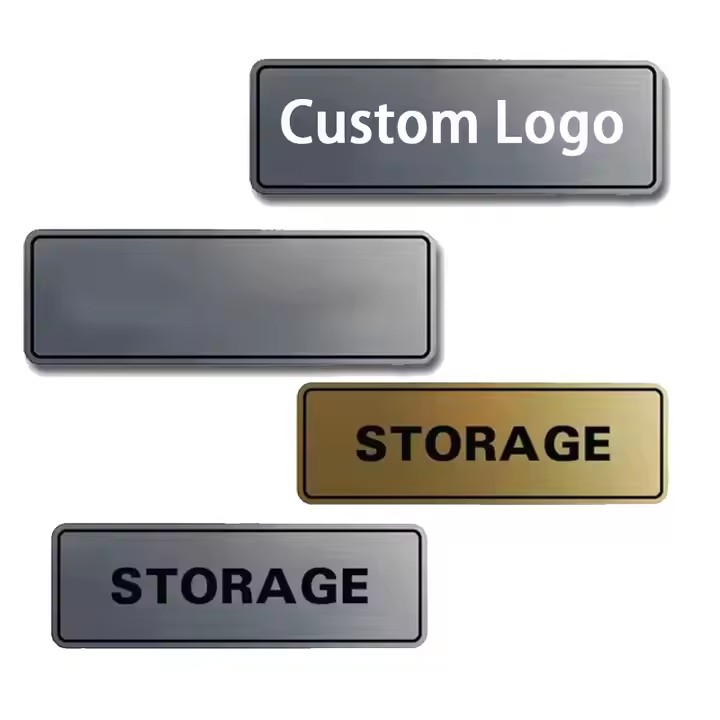Industry-Specific Requirements for Metal Name Plates: What You Need to Know

How to Choose the Right Fonts, Colors, and Graphics for Name Plates
06/11/2025
What Are Metal Tags and Their Main Applications?
20/11/2025Industry-Specific Requirements for Metal Name Plates: What You Need to Know



Industry-Specific Requirements for Metal Name Plates: What You Need to Know
Metal name plates are critical across countless industries, not just for identification but for safety, traceability, compliance, and branding. However, not all name plates are created equal. Each industry has its own standards, environmental challenges, and regulatory requirements that impact the material, design, and construction of metal name plates.
In this article, we’ll explore how different industries set specific demands for metal name plates—and what you should consider when customizing them for your application.
🛫 1. Aerospace Industry
✈️ Key Requirements:
-
Extreme durability: Must withstand vibration, temperature swings, altitude changes.
-
Permanent identification: Etched or stamped serial numbers for traceability.
-
Compliance: Must follow standards like AS9100, ATA Spec 2000, or MIL-STD-130.
-
Corrosion resistance: Use of anodized aluminum or stainless steel.
🧩 Common Uses:
-
Engine tags
-
Aircraft part identification plates
-
Maintenance records and safety info plates
🚗 2. Automotive Industry
🚘 Key Requirements:
-
Heat and fluid resistance: Must survive under-hood temperatures, oil, coolant exposure.
-
VIN and traceability: Vehicle identification must remain intact for the life of the car.
-
Mass production consistency: Uniform size, layout, and serialization.
⚙️ Typical Applications:
-
VIN plates
-
Emissions and certification labels
-
Component traceability tags
🏥 3. Medical Equipment & Devices
🧪 Key Requirements:
-
Cleanroom compatibility: Non-contaminating surfaces.
-
Chemical resistance: Must withstand disinfection, sterilization, and alcohols.
-
Regulatory labeling: Must meet FDA or CE marking requirements.
-
Legibility: Crisp, readable text for critical safety or instructions.
🏷️ Common Uses:
-
Surgical instrument tags
-
Device control panel labels
-
Barcode or UID plates for traceability
🏭 4. Industrial Machinery & Manufacturing
🏗️ Key Requirements:
-
Rugged durability: Resistance to abrasion, chemicals, oils, and moisture.
-
Safety labeling: Must include ISO, ANSI, or OSHA-compliant icons and warnings.
-
Operational data: Often includes voltage, load limits, wiring diagrams.
⚠️ Uses:
-
Machine data plates
-
Safety warning labels
-
Name plates for pumps, motors, compressors
⚡ 5. Electrical & Electronics
🔌 Key Requirements:
-
Insulating material backings (optional): Prevent interference or grounding.
-
Small-format readability: Must be legible even in tight spaces.
-
Barcode/QR integration: For inventory and lifecycle tracking.
🧲 Common Tags:
-
Panel labels
-
Circuit ID plates
-
Electrical spec sheets on enclosures
⚓ 6. Marine Industry
🌊 Key Requirements:
-
Saltwater corrosion resistance: Use of marine-grade stainless steel or anodized aluminum.
-
Weatherproofing: Must withstand UV, wind, and moisture.
-
Safety & registration compliance: Plates often required for vessel registration.
⛴️ Uses:
-
Boat capacity plates
-
Equipment ID plates
-
Dockside safety signage
🏢 7. Commercial & Architectural Applications
🧱 Key Requirements:
-
Aesthetic quality: Engraved or laser-marked for a premium look.
-
Customization: Finishes like brushed metal, color anodizing, embossed logos.
-
Weather durability: For outdoor signage or building plaques.
🖼️ Applications:
-
Lobby signage
-
Door name plates
-
Brand logos on furniture or fixtures
✅ Final Considerations
Before producing metal name plates for any industry, consider:
-
Environmental exposure (heat, chemicals, UV, abrasion)
-
Relevant certifications or legal requirements
-
Desired lifespan of the label
-
Level of customization or serialization
-
Branding and design needs
Working with a manufacturer that understands industry-specific compliance is essential to ensure your name plates perform reliably and meet regulations.
📌 Conclusion
From aerospace to medical devices, each industry requires specialized metal name plates that go far beyond standard labeling. By understanding these unique demands, you can ensure your plates are fit-for-purpose, durable, and regulatory-compliant.
Need help designing or choosing materials for your industry? Let us assist you with expert customization, prototyping, and mass production services tailored to your sector.



